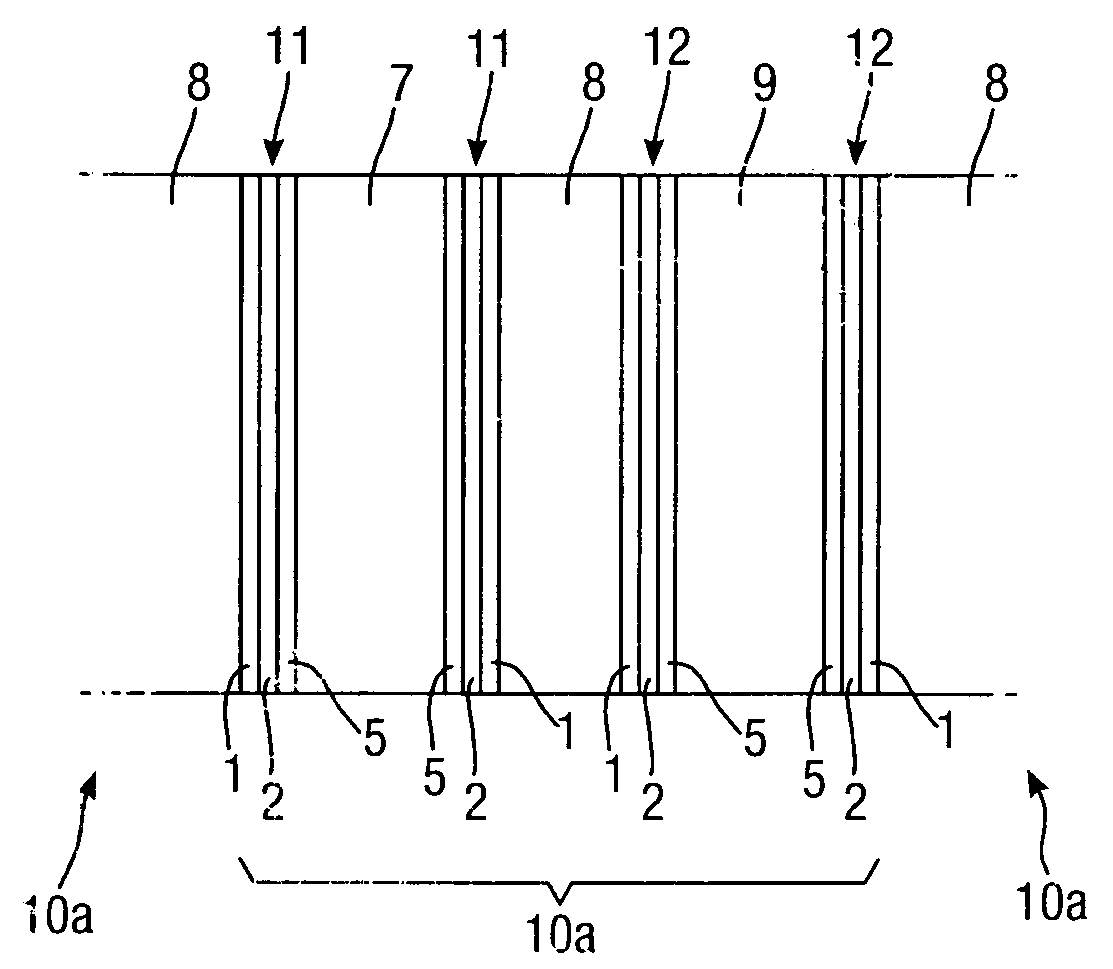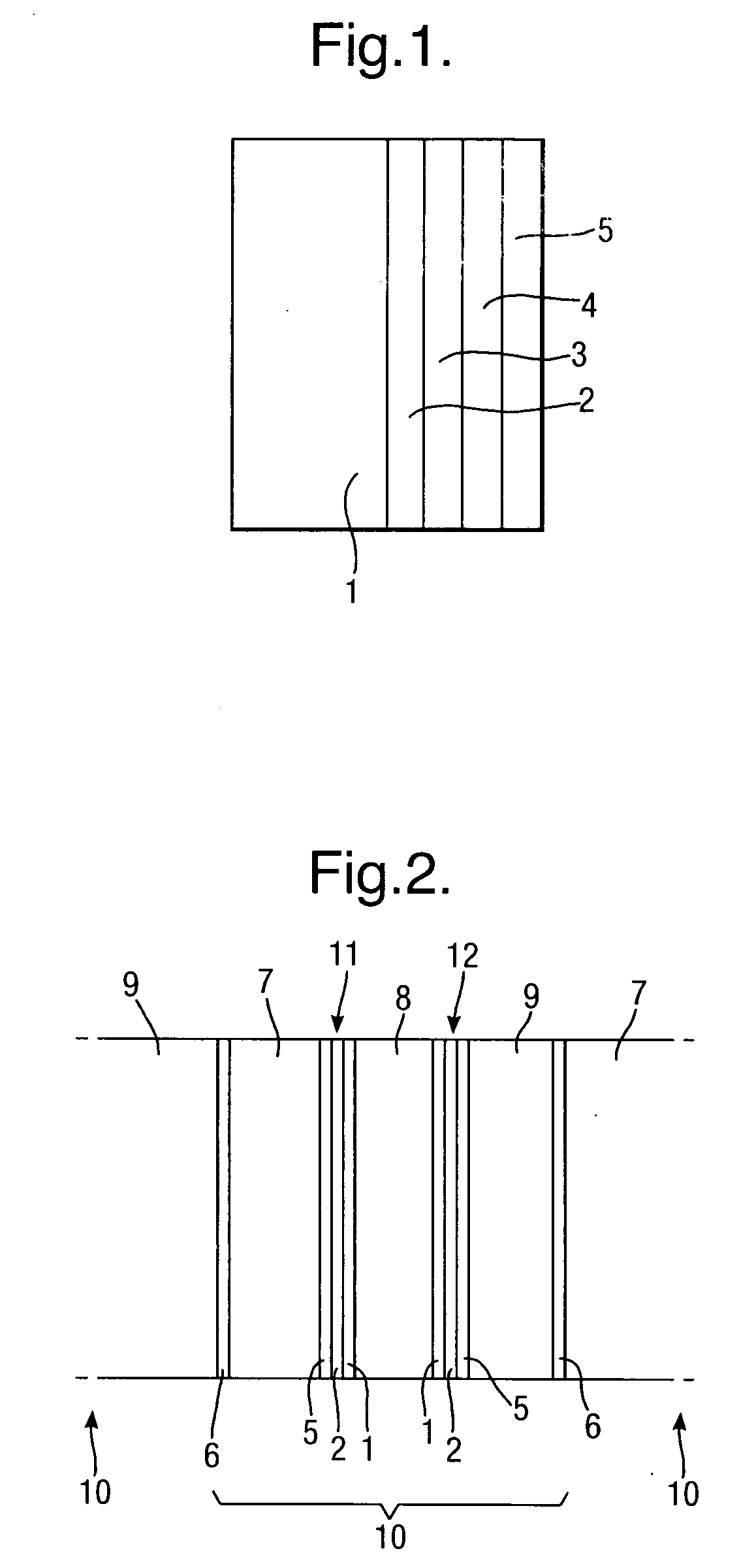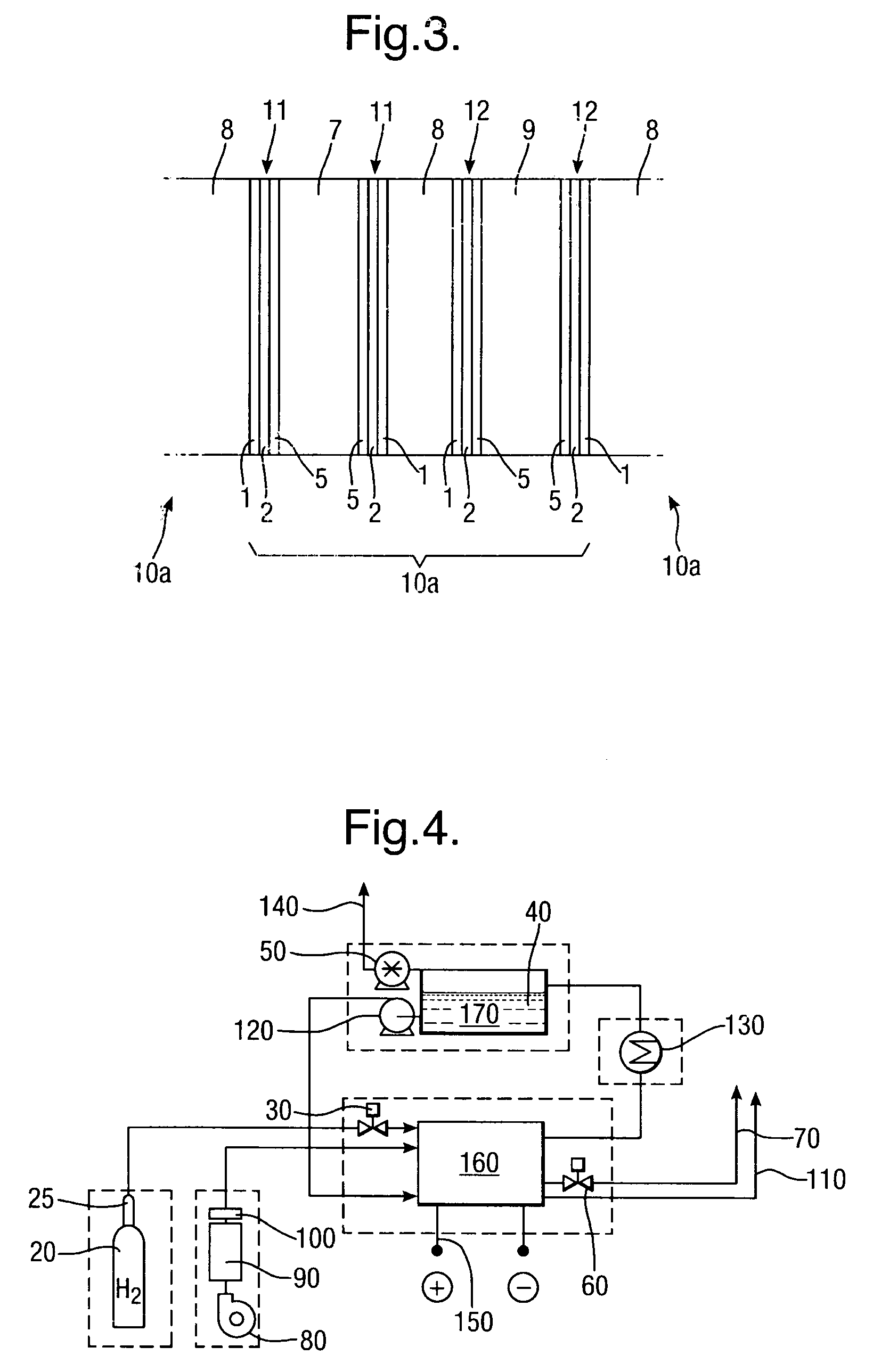Electrodes of a Fuel Cell
a fuel cell and electrode technology, applied in the field of electrodes of fuel cells, can solve the problems of nickel mesh being prone to breakage, high cost, electrical loss, etc., and achieve the effects of high gas pressure, simple fuel cell, and high efficiency
- Summary
- Abstract
- Description
- Claims
- Application Information
AI Technical Summary
Benefits of technology
Problems solved by technology
Method used
Image
Examples
example 1
[0054]A 0.5 μm layer of silver is electro-less plated onto the substrate 1 to form a first layer 2 of conductive material. A second layer 3 of silver of thickness 3 μm is then electroplated onto the first layer 2 of conductive material. A protective 0.05 μm thick layer 4 of rhodium is then electroplated onto the second layer 3 of conductive material to complete the conductive layer structure.
example 2
[0055]A 0.5 μm layer of silver is electro-less plated onto the substrate 1 to form a first layer 2 of conductive material, followed by electroplating copper to form a second layer 3 of thickness 5 μm of conductive material, followed by electroplating a protective layer 4 of nickel, 1 μm thick.
example 3
[0056]A 0.5 μm layer 2 of silver is electro-less plated onto the substrate 1 to form a first layer of conductive material, followed by electroplating 5 μm thickness of nickel to form a second layer 3 of conductive material.
The Catalyst Mixture
[0057]The example catalyst mixtures for both cathode and anode electrodes use a combination of catalyst, binder and solvent which are spray-coated onto the conductor layers of Examples 1, 2 and 3 above. The binder may for example be polyethylene (such as PE1020 from Exxon-Mobil), and the solvent isododecane. Percentage weights refer to the total mass of the dry materials before the addition of a suitable solvent.
[0058]The cathode catalyst mixtures A to C below include an oxygen reduction catalyst.[0059]A. Activated carbon, with 10% binder and solvent.[0060]B. 10% Pd / Pt on activated carbon, with 10% binder+solvent.[0061]C. Silver on activated carbon, with 10% binder+solvent.
[0062]The anode catalyst mixtures D and E below include a hydrogen oxida...
PUM
| Property | Measurement | Unit |
|---|---|---|
| thickness | aaaaa | aaaaa |
| contact angle | aaaaa | aaaaa |
| water contact angle | aaaaa | aaaaa |
Abstract
Description
Claims
Application Information
 Login to View More
Login to View More - R&D
- Intellectual Property
- Life Sciences
- Materials
- Tech Scout
- Unparalleled Data Quality
- Higher Quality Content
- 60% Fewer Hallucinations
Browse by: Latest US Patents, China's latest patents, Technical Efficacy Thesaurus, Application Domain, Technology Topic, Popular Technical Reports.
© 2025 PatSnap. All rights reserved.Legal|Privacy policy|Modern Slavery Act Transparency Statement|Sitemap|About US| Contact US: help@patsnap.com



